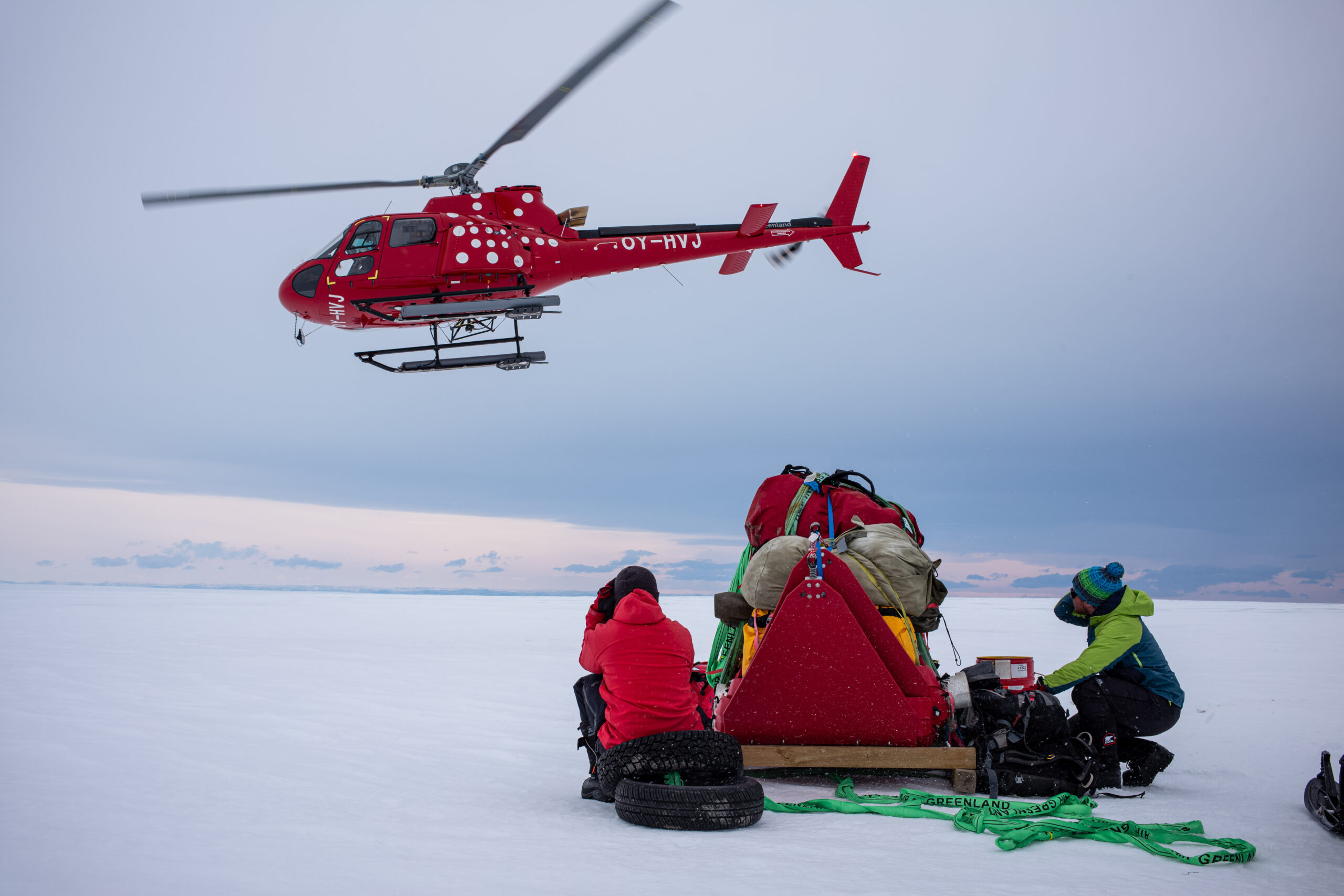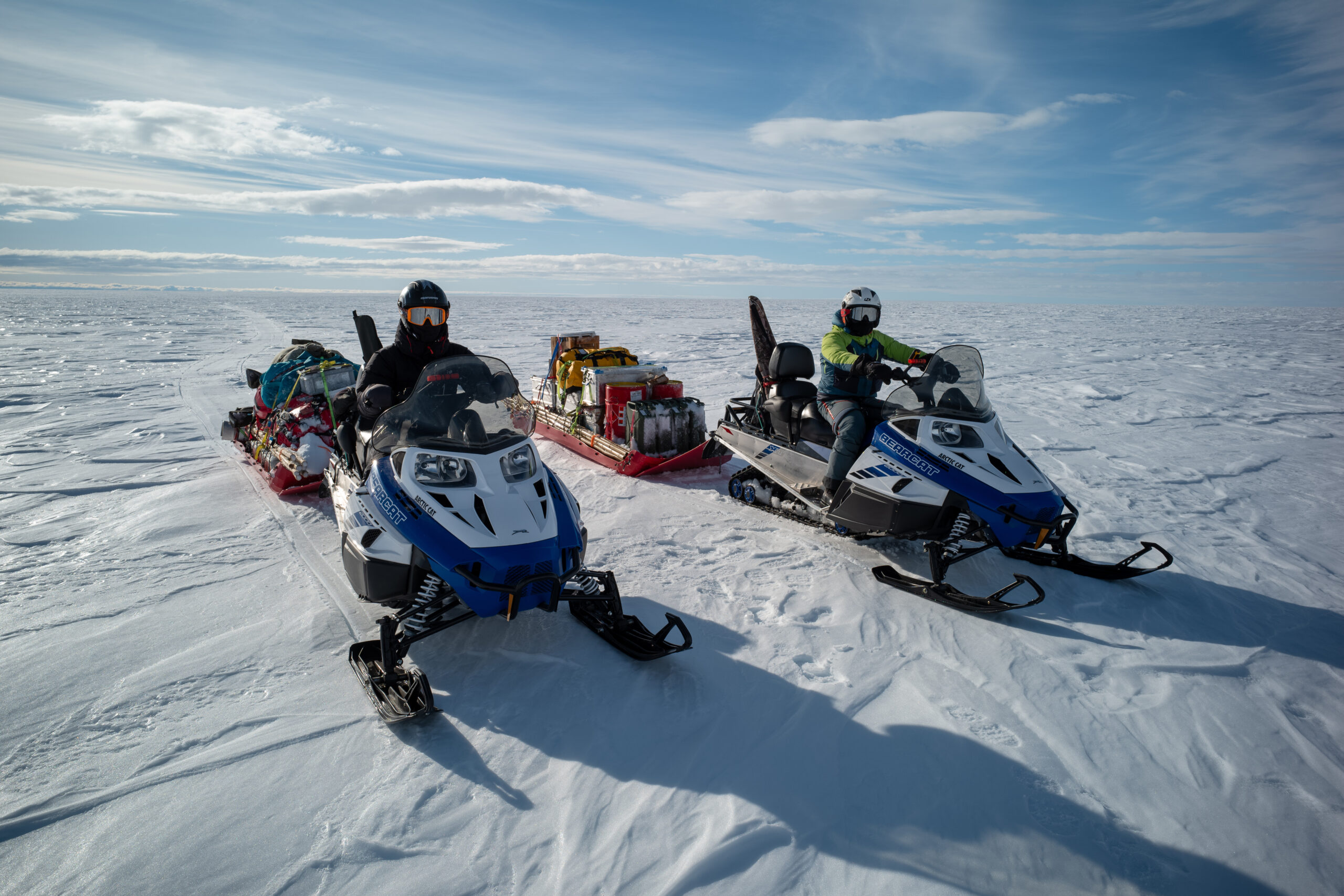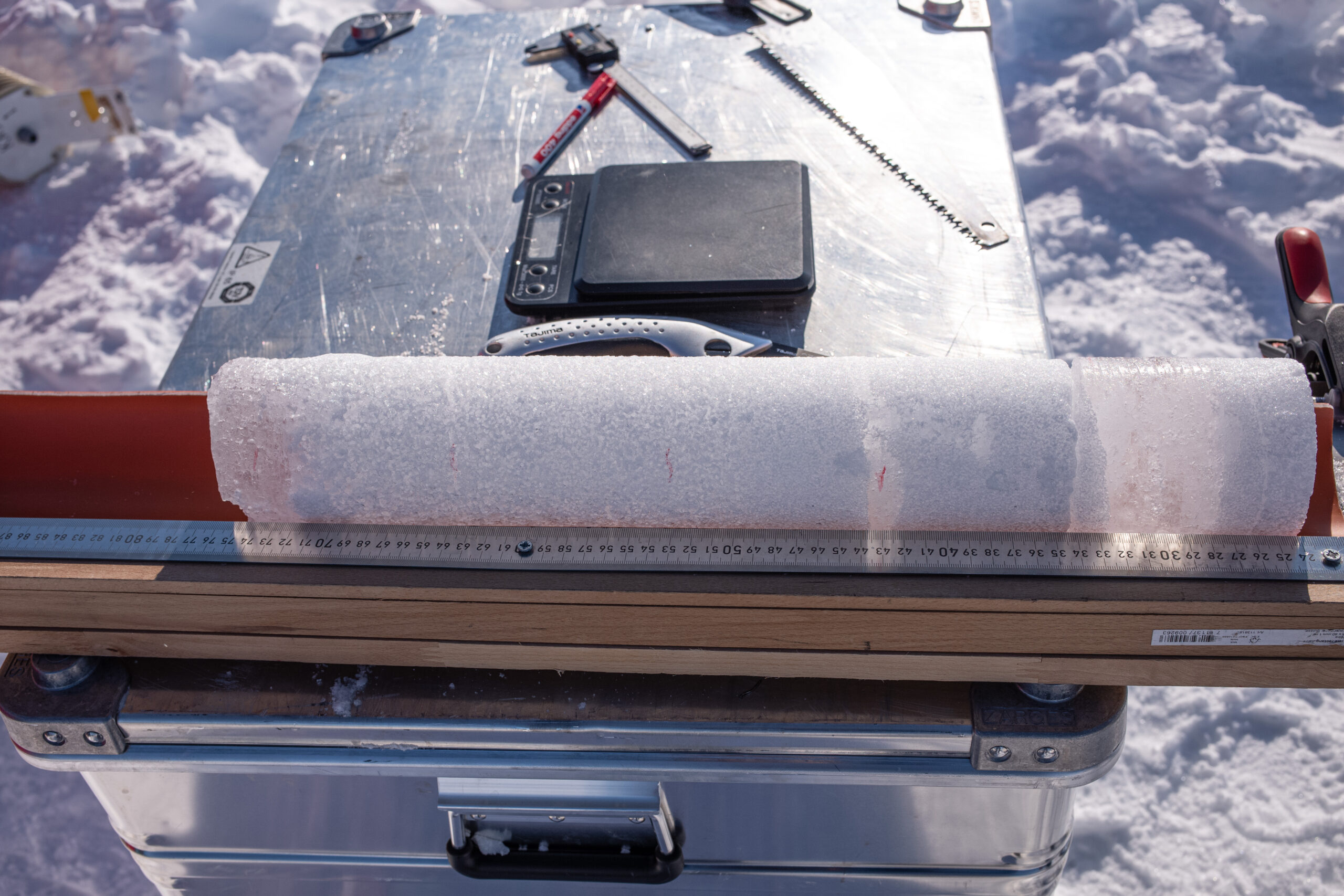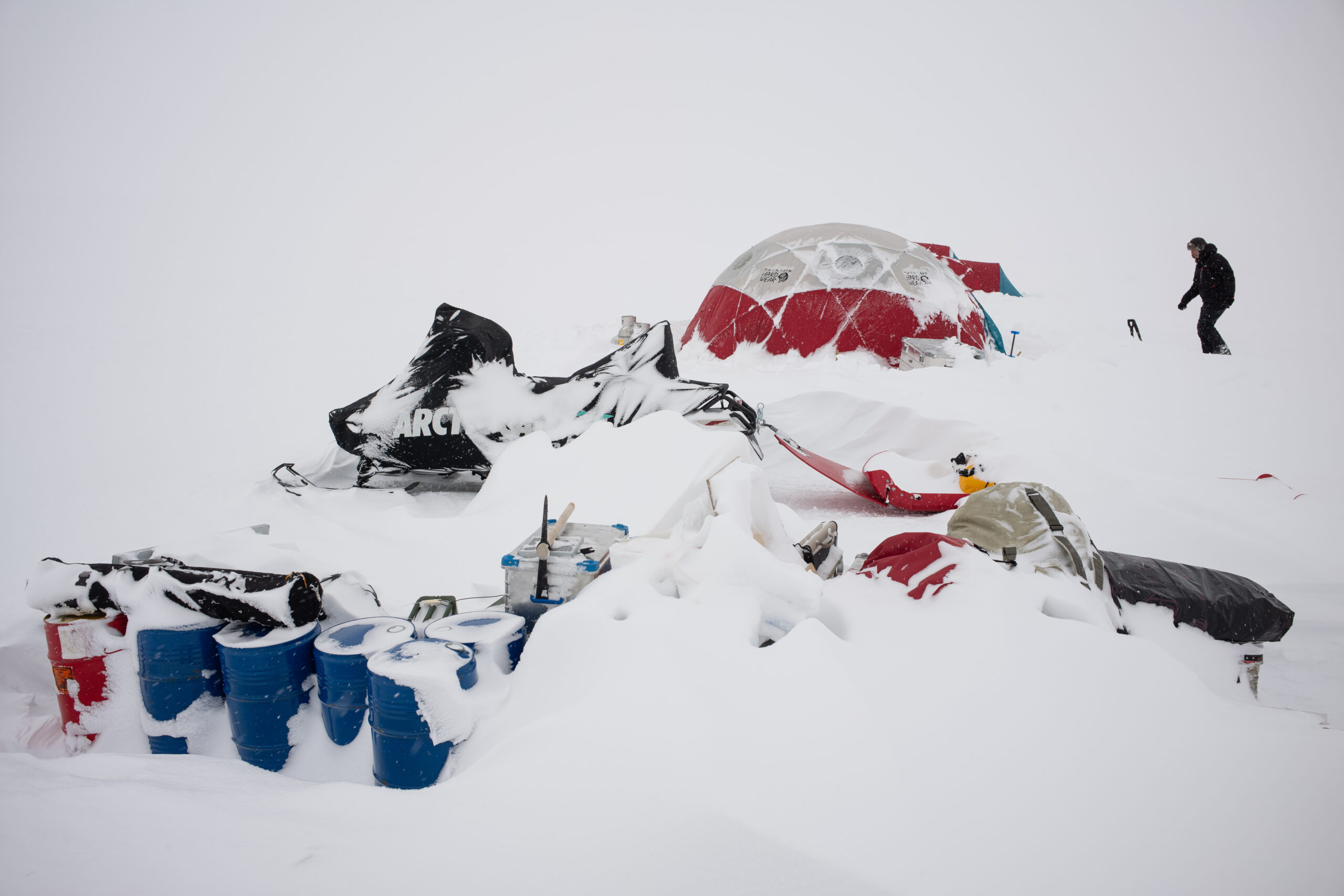A vast wall of ice stretching across the horizon and engulfing all the mountains that lay before it: these were my first impressions of the Greenland Ice Sheet. I was no stranger to glaciers having lived for the last few years in the Swiss Alps, but I was taken aback by the scale of what I could now see before me. Coming in from Kangerlussuaq, our helicopter then flew low over gaping crevasses before touching down gently on the pristine snowy surface. After disembarking, we braced ourselves against our gear as the powerful downwash of the helicopter blasted heaps of snow over us on take-off. As the roar of the engines faded into the distance, we were left alone in a vast polar wilderness. Just us – three glaciologists, two snowmobiles and a sled piled high with supplies and equipment for our expedition. Our mission: to venture deep into the percolation zone to investigate the changing nature of surface run-off on the ice sheet.

The following morning, we set off on our snowmobiles, driving further into the ice sheet with our belongings in tow, watching the last glimpses of land fade beyond the horizon. After an arduous 100-kilometre journey, we reached the site of our intended base camp. A single bamboo pole, barely breaching the surface, was the only distinguishing feature that made this location differ from the landscape of the past hours of travel. We quickly established our little camp and set-up our tents – the vibrant red fabric being the only interruption in an otherwise ocean of white. This would be our home for the next 12 days.


This would be the final fieldwork campaign of the CASSANDRA project and, whilst being my first outing, it would in fact be the culmination of several years research of the University of Fribourg, Switzerland. A network of firn-monitoring stations had previously been established along the K-transect and it would be our task to see to their final disassembly and to recover their valuable data. Their purpose was to record the local meteorological conditions and analyse the changing thermal regime of cold firn within the percolation zone. Coupled with this, we continued an ongoing campaign of annual firn stratigraphy measurements by manually drilling cores and quantifying superimposed ice formation. Increased surface melt on the Greenland Ice Sheet has led to the advancement of ice slabs further inland – thick layers of ice that are concealed a few meters below the snow surface. Their presence impedes the downward percolation and retainment of water within the firn, and instead further contributes to mass loss via surface run-off. Given that surface run-off forms a major component of the ice sheet’s mass balance, understanding the spatial variability of the run-off limit is of profound importance and forms the project’s main objective.


Life on the ice sheet was an enduring challenge: adaptability was crucial in this harsh environment and things would seldom go solely according to plan. Temperatures rarely exceeded -20°C, exacting a heavy burden on all of us. Basic tasks became infinitely more difficult. One such bizarre spectacle being the necessity of putting every tent pole linkage over a camping stove to melt internal ice and enable their disassembly. However, by supporting each other our spirits remained resolute, often bolstered by some improvised home cooking. Unlikely to be featured on the menu of any Michelin star restaurant, this nonetheless fuelled us during our daily outings as we ventured out far from our base camp to conduct measurements. I will never forget the morale boost entailed from the unexpected discovery of a few jars of unopened pesto in our food cache. Isolated from the luxuries of our everyday lives, the simplest things held immeasurable value.

Reflecting on this expedition, while there were often considerable hardships, it was truly an unforgettable experience. I cannot say that waking up to a pile of snow, formed from my own respiration, falling onto my face was a particularly enjoyable matter; it certainly qualified as one of many instances of ‘Type II’ fun experienced during the trip – entertaining in retrospect but certainly not in the moment! However, I am immensely grateful for being able to join a once-in-a-lifetime adventure in an incredible landscape and I hope our research efforts form a valuable contribution to the field of glaciology.
I would like to express gratitude for the financial support received from the European Research Council (ERC) CASSANDRA project and from the HI-SLIDE and MAGNOLIA projects of the Swiss Polar Institute (SPI): our expedition would not have been possible without them.
Marcus Gastaldello is a doctoral student at the Department of Geosciences of the University of Fribourg. His fieldtrip took place in spring 2024 with financial support of an SPI Exploratory Grant in the context of the project “Measuring Firn Hydrology and Ice Dynamics at the Greenland Runoff Limit (MAGNOLIA)” led by Horst Machguth from the University of Fribourg.
Header image: Snow-covered base camp © 2024 Marcus Gastaldello, all rights reserved